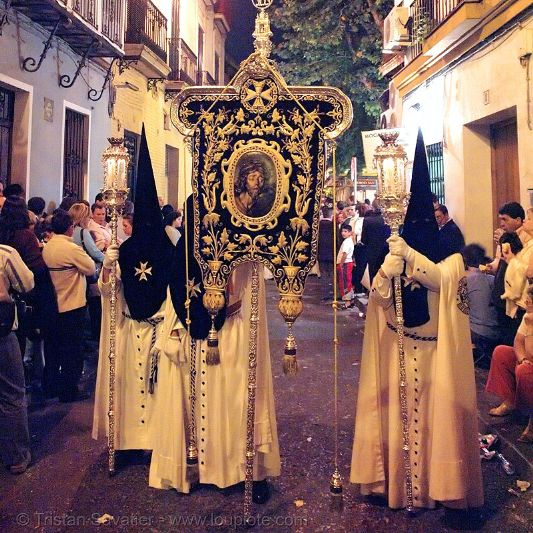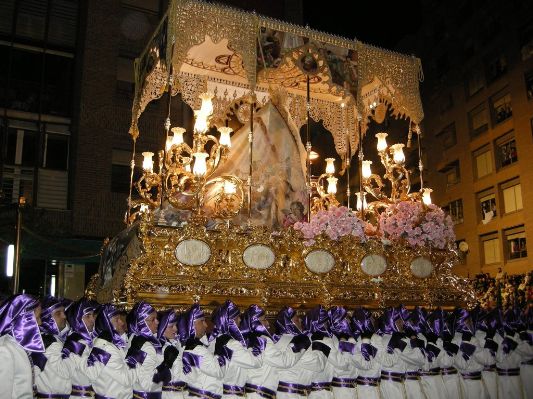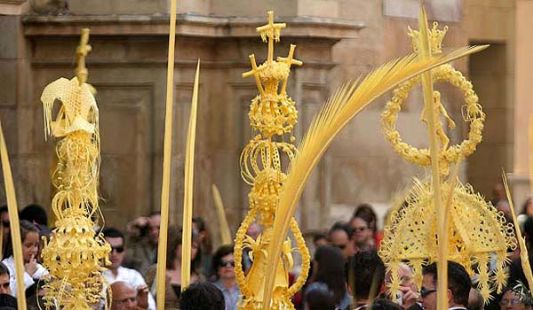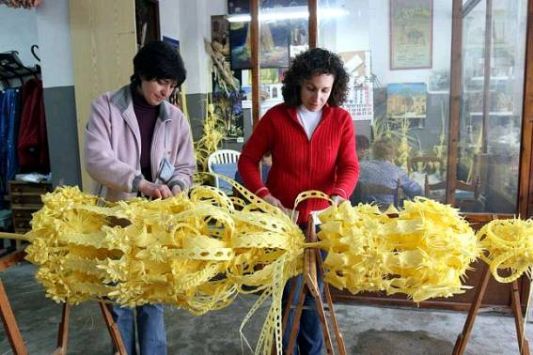
Spain is completely transformed during Easter week. Everybody, everywhere, turns out to experience one of Spain's most traditional events to the full. Don't miss the chance to visit this event: you'll be able to share some very special moments in an atmosphere unlike anything you've ever known.
.jpg) There are many different ways to discover Spain: enjoying its coast and beaches, following a route around its various monuments, exploring the countryside, playing sports like golf... However, if you've never visited Spain during Easter week, then you simply have to come. And even if you already know this famous fiesta, it's well worth making another trip, as each region of Spain has its own way of celebrating the event.
There are many different ways to discover Spain: enjoying its coast and beaches, following a route around its various monuments, exploring the countryside, playing sports like golf... However, if you've never visited Spain during Easter week, then you simply have to come. And even if you already know this famous fiesta, it's well worth making another trip, as each region of Spain has its own way of celebrating the event.
In Spain, Easter week is celebrated with a great deal of emotion. People take an active role in its events and traditions. All day and night the streets are filled with the beat of the drums, masses of colourful flowers, and the consummate art of religious sculpture, all combining to produce a highly moving atmosphere.
Easter week is celebrated in every city, town and village in Spain. Nevertheless, there are some fiestas that are especially well known for their uniqueness and beauty, and have received the International Tourist Interest designation.
During Easter week in Seville you'll see how the “cofradías” (religious brotherhoods) manage to withstand the colossal weight of elaborately decorated statues of the Virgin Mary as they parade through the narrow streets of the old town. Easter week in Malaga includes the ritual privilege of the freeing of a prisoner, and one of the most moving moments of all is when the figure of Jesus Christ blesses the convict. During the Easter week celebrations in Cuenca you can also enjoy the concerts in the Religious Music Week festival, which take place in historic buildings such as the cathedral.

If you go to León in Easter week, you'll find one of the highlights is the encounter between Saint John and the Virgin Mary in the Plaza Mayor square, which marks the end of the Easter processions. During Easter week in Zamora, the sound of Gregorian chant provides an incredible atmosphere for the nocturnal processions. During the Easter week processions in Valladolid, make sure to look closely at the religious statues –they are priceless works of Baroque art. Easter week in Salamanca is spectacular on account of the backdrop formed by the city's stunning monuments.
The Palm Sunday procession in Elche features the customary palm leaves and is one of the most beautiful of any held in Spain. In Cartagena the culmination of the processions is especially moving, with thousands of people joining their voices in song to intone the Salve Maria to the Virgin Mary. Lorca is especially original – the processions include figures and scenes from the bible and from ancient civilisations. In the province of Albacete, the crowning moment in Easter week in Hellín is “the tamborada”, when the sound of up to 20,000 drums invades the town. Easter week in Cáceres is unique for its cofradías dating from the 15th century, and Eater week in Murcia has moments of breathtaking emotion such as on Easter Saturday, when the procession of 'Cristo Yacente' passes beneath the Santo Domingo arch .

However of all these celebrations the most renowned and publicised is that of Seville. These celebrations are famous for their statues of the Virgin Mary with canopies: they are Baroque statues with silver and gold crowns, embroidered cloaks and velvet tunics, which only reveal face and hands.
.jpg)
Seville has been holding its Easter week celebrations since the 16th century, and they have become universally famous. Some 50,000 people put on traditional robes to parade in the 58 organised processions, while the "costaleros" carry the “pasos” (religious statues) on their shoulders. There are processions in the evening and at night every day. Each brotherhood sets out from its church and has an established route, although they must all pass the so-called “official section”, which starts in Calle Campana and finishes passing by the Cathedral. Once each procession has left the Cathedral, it returns to its church on a different route to that followed on the way out. The “saetas” are very emotional moments of the processions: these are solemn flamenco songs, recited “a cappella” from the balconies in honour of the statues.
The early hours of Good Friday constitute the most important time of the Seville Easter week celebrations. That night, some of the most venerated statues make their way through the streets, such as Jesús del Gran Poder, la Macarena, la Esperanza de Triana and el Cristo de los Gitanos. The streets of the city fill with people and with emotion all night and well into the following morning. However one needs to be patient because the waits to admire these beautiful statues tend to be long.
You can see processions by heading for any point on their routes, except in the “official section”. Here there are seats and stands from which to admire the passing processions, which must be reserved by contacting the Consejo Superior de Hermandades y Cofradías (Brotherhoods’ Association).
Easter week is one of the most spectacular and emotional fiestas in Spain. Religious devotion, art, colour and music combine in acts to commemorate the death of Jesus Christ.
Palm Sunday as we know is the celebration that commemorates Jesus’ triumphant arrival in Jerusalem and always sees large crowds of people in attendance.
The Palm Sunday Procession is held on the Sunday before Easter week. This fiesta has special importance in Elche. Its origins date back to the end of the 14th century. Hundreds of people take part by carrying figures hand-crafted in the town from palm branches, a truly beautiful spectacle.



Elche is the only place in the world where the tradition of crafting white palm fronds lives on. This town has been exporting palm frond creations to other countries for centuries. Palm branches are used, which, after being treated, are plaited into beautiful, creative forms and figures. Not to be missed at this fiesta is the palm-figures competition organised by the Religious Brotherhoods of Easter Association. The works presented for the competition are exhibited over the course of the weekend in the Council Chamber of the Town Hall. It is free of charge and you can admire, from up close, these beautiful, complex images created by hand.

.jpg)